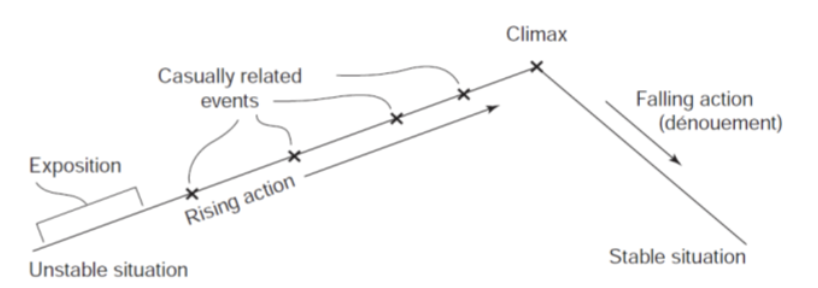Creative Writing ETA Term 2
1/68
There's no tags or description
Looks like no tags are added yet.
Name | Mastery | Learn | Test | Matching | Spaced |
|---|
No study sessions yet.
69 Terms
Sensory Details
Helps add depth to the story by create immersive scenes for the reader
Sight
Visual details like colors, shapes, and patterns
Sound
Auditory details that can use onomatopeias and alliterations
Smell
Olfactory details that is considered the most evocative sense in a reader
Taste
Gustatory details that can help ground readers in the physical sensations of a charater
Touch
Tactile details that helps the reader understand the physical world of the story
What to Avoid When Using Sensory Details?
Too many adjectives, too many adverbs, cliche figures of speech
Character
Textual representation of a person in a story
Characterization
The way a character is introduced and developed throughout the story
Stream of Consciousness
Characterization technique that immerses the readers in a character’s inner world through sensory perceptions
Methods of Characterization
Physical descriptions, speech, explanation of thoughts, responses and reactions
Protagonist
Character who dominates the story and is the most developed
Antagonist
Character who opposes the protagonist, it doesn’t have to a person
Anti-Hero
Protagonist who has the opposite usual attributes of a hero
Tragic Hero
Protagonist who comes to a bad end as a result of their behavior
Flat Characters
Characters who have 1-2 personality traits and are usually sterotypes
Round Characters
Characters who have multiple personality traits and feel like real people
Static Characters
Characters who remain the same throughout the story
Dynamic Characters
Characters who grow throughout the story
Stock Characters
Characters who are very stereotypical
Sacrificial Characters
Characters whose sole purpose is to die
Foil Characters
Characters who contrast the protagonist to highlight their qualities
Bit Players
Characters with a very small role in the story
Psycho
Character with mental issues that stem from trauma
Phobic
Characters who deal with anxiety by extreme avoidance
The Confidant
Character whom the protagonist confides in
Unseen/Absent Character
Character who is mentioned in the sotry but doesn’t have involvement in the action
Point of View
Vantage point from which an author presents the story
First Person
Uses first pronouns, narration is restricted to what that characters observes or thinks
Second Person
Uses pronouns like “you“, rarely used technique, reader is immersed in the narrative as a character in the story
Third Person Omniscient
Uses third person pronouns, narrator is outside the story
Third Person Limited
Uses third person pronouns, limit the perspective to the mind of one character
Third Person Objective
Uses third person pronouns, doesn’t enter the minds of the characters, presents the event objectively
Multiple Points of View
Several points of view are present in the story
Diction
Poet’s choice of words
Syntax
Poem’s sentence structure
Imagery
Can be a descriptive passage or figurative language
Symbolism
They are highly suggestive yet succinct
Rhythm
Creates a pattern of yearning and expectation
Word Sounds
Used to emphasize meaning, action, and emotion, and to call the reader's attention to connections between words
Caesura
Strong pause in the line, denoted with 2 vertical lines: ||
Structure
The way that the poem is organized
Lines
Most visible structural device
Stanza
Group of lines,
Stichic
Poem without stanzas
Strophic
Poems with stanzas
Types of Stanzas
Monostich, Couplet, Tercet, Quatrain,Quintet, Sestet, Septet, Octave
Rhyme Schemes
Any pattern of end rhymes
Free Verse
Poem that obeys no set metrical patters
Enjabment
Continuance of a phrase from one line to the next
End-Stopped Line
A definite pause at the end of a line
Fiction
Narrative that recounts made-up events in time
Plot
Events of a narrative
Freytag Pyramid

Exposition
Beginning of the story, Unstable situation that sets the plot in motion
Rising Action
Interconnected series of events that lead to the climax
Climax
Most intense turning point of the story
Falling Action
Resolution begins
Resolution
Final outcome of events
Plot vs Story
Plot = events arranged by causality
Story = events arranged by time sequence
Happy Ending
Everything ends well and all is resolved
Tragic Ending
Things don’t end well, forces the reader to contemplate life
Setting
Physical and social environment of the story
Irony
Contrast between appearance and reality
Types of Irony
Verbal, Situational, Attitudinal, Dramatic
Symbols
Object with meaning beyond itself
Public Symbols
Recognizable symbols
Private Symbols
Symbols unique to an individual or work
Themes
Ideas about real life that we gained from the story